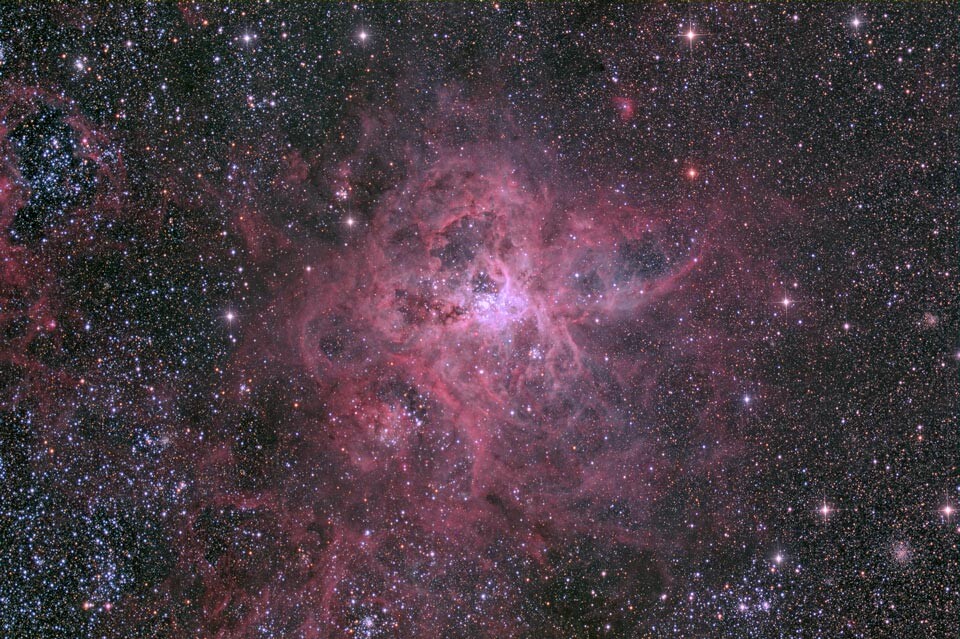Event JSON
{
"id": "769be44a3dbdcda75397d947c7dc928d73d36b3fe5aebcf3581cb257ee8631bd",
"pubkey": "31ecb9d2a9c236b4f8e92e204f3a8dad1546d97cfdd9c2def3201e30d37fa93d",
"created_at": 1743903032,
"kind": 1,
"tags": [
[
"t",
"nebula"
],
[
"imeta",
"url https://files.mastodon.bot/media_attachments/files/114/284/144/643/337/211/original/9667cbc33ae746df.jpg",
"m image/jpeg",
"dim 960x639",
"blurhash UA9se[a{0_ogS1W.o2so5iof=#R%R*j[ofWV"
],
[
"proxy",
"https://mastodon.bot/users/apod_random/statuses/114288429122430587",
"activitypub"
],
[
"client",
"Mostr",
"31990:6be38f8c63df7dbf84db7ec4a6e6fbbd8d19dca3b980efad18585c46f04b26f9:mostr",
"wss://relay.mostr.pub"
]
],
"content": "APOD from 2014-02-17\n\nThe Cosmic Web of the Tarantula #Nebula\n\nThe Tarantula Nebula, in the Large Magellanic Cloud, is the largest star-forming region nearby. Spanning 1,000 light-years, it would dwarf Orion if closer. Its arms encircle NGC 2070, a cluster with massive stars and recent supernovae.\n\nHD image at https://apod.nasa.gov/apod/ap140217.html\n\nhttps://files.mastodon.bot/media_attachments/files/114/284/144/643/337/211/original/9667cbc33ae746df.jpg",
"sig": "ed200f9e403610ee4c1e9d606c4ed1dfe7965e4eb2082a647e69e93e17a3499a856995c6e13d8fc18a5858f84b67ae5ccedd3527e8a5f446cf25752018151a0c"
}
